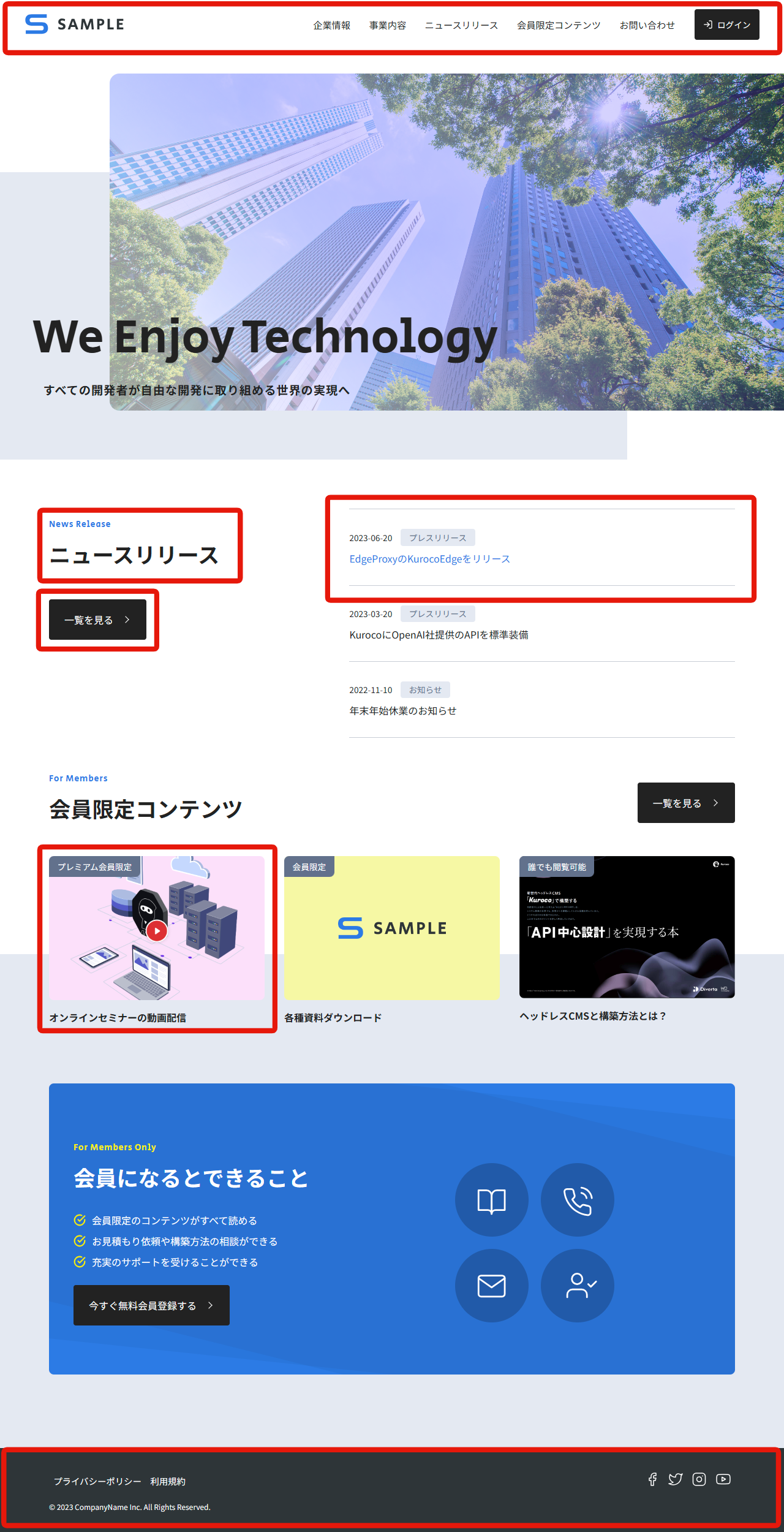Design Production Workflow Overview
To maintain design productivity and quality, key points and important considerations are outlined.
- The listed content is just an example. Please refer to it based on your project requirements and schedule.
- Assumption: The following scenarios are anticipated. Implementing these points will help ensure the overall progress of the project runs smoothly.
- Project:
- In the case of large-scale projects
- In the case of projects that anticipate long-term operation and maintenance
- Structure: When multiple companies or individuals are involved, dividing and sharing tasks
- Project:
Introduction
In CMS design, it is important to design with a reusable component design philosophy and to create prototypes properly.
Prototypes allow you to align the final recognition of the site, including screen transitions, in the design stage, making it easier to progress the project smoothly.
Example of Componentization

- Header
- Footer
- Headings
- Buttons
- List of articles
- Card UI for listing
- Pagination and more
Document Verification
Please check the following in advance:
- Page list (sitemap)
- Screen design document, wireframes
From the page list, confirm whether it is a "dynamic page to be templated in CMS" or a "static page".
Page-level verification
- Confirm the "items to be output in CMS" and "those that are not".
- In particular, items to be output in CMS (items to be output in HTML) require consideration for operation, as mentioned later.
- For items to be output in CMS, also check how the display will be affected by "pattern differences" or "presence/absence of elements".
1. Basic Points
| Images | Ensure that the image cropping range is clear. Especially when there are images with text or overlays, make it easy for the coding team to collaborate.
|
|---|---|
| Others |
|
2. Creating Prototypes
Include the following in the prototype.
| Link Settings |
|
|---|---|
| State Management | Design for changes in state management, transitions, animations, etc., to make the design and behavior clear when they change.
|
| Other Elements with Motion |
|
| Forms |
|
Share the created prototype with the client and the project team for review. Depending on the sharing settings and tools, feedback and revisions can be efficiently done using the comment feature.
3. Creating Design Guidelines
Create design guidelines and collaborate with the coding team. Summarize them in the design artboards or create separate documents.
The following are examples of the contents:
| Design Rules |
|
|---|---|
| Component List | Summary of Commonly Used UI Components within the Site
|
| Supported Devices |
|
4. Other Considerations
Common design process revisions and additional requests should be confirmed in advance.
- Designing 404 pages and loading screens
- Creating favicons
- List displays: How to handle cases with zero items
- Component units: Whether to consider patterns without elements (such as images or descriptions)
- Images: Whether to display the same image on both PCs and smartphones or use images with different ratios
- Whether to create designs for WYSIWYG editors
Support
If you have any other questions, please contact us or check out Our Slack Community.